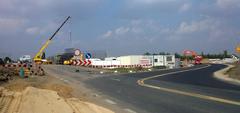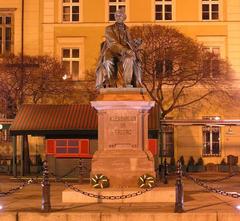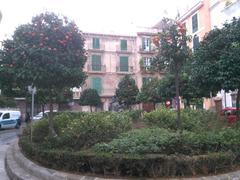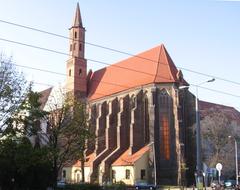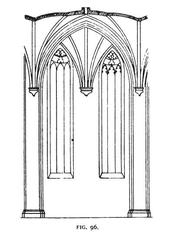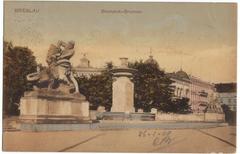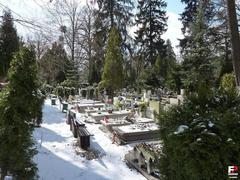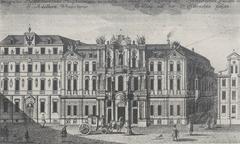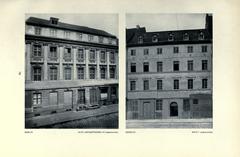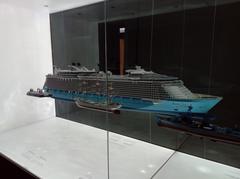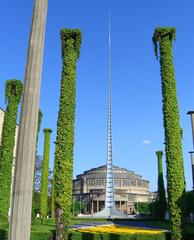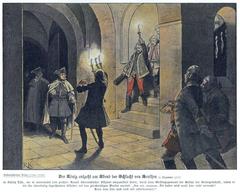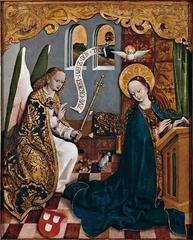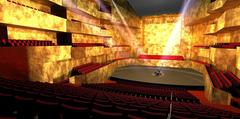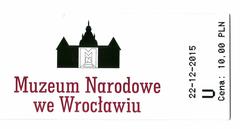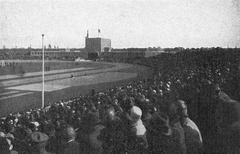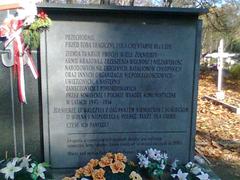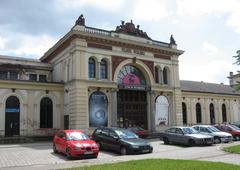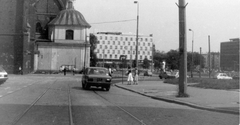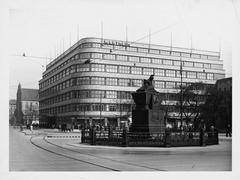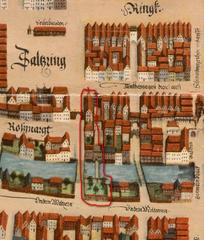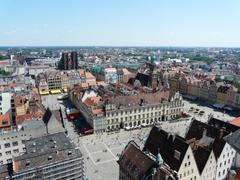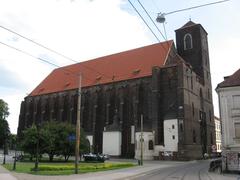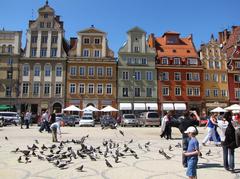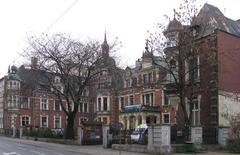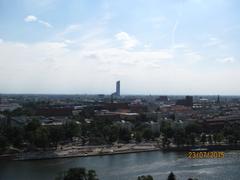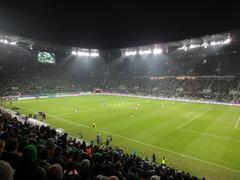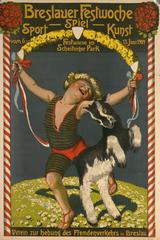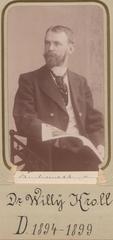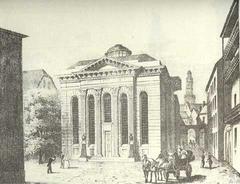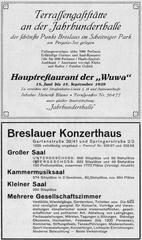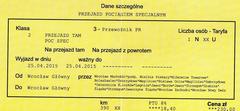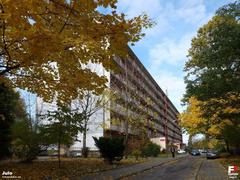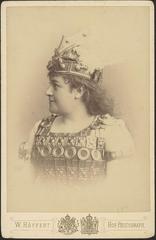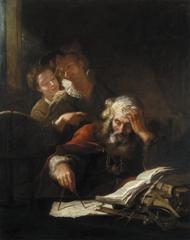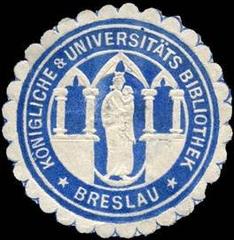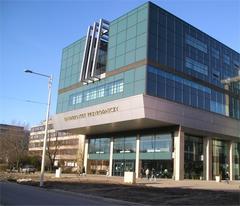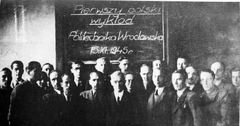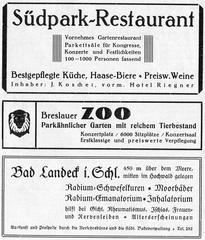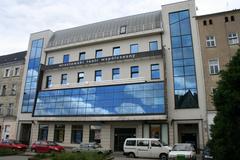
Visiting The Pillory: Hours, Tickets, and Historical Significance in Wrocław
Date: 24/07/2024
Introduction
The Pillory in Wrocław, Poland, is a captivating historical site that stands as a testament to the city’s rich and tumultuous past. Located in the heart of the bustling Market Square, this monument offers visitors a unique glimpse into medieval justice and the evolution of societal norms over centuries. Originally erected in 1492 by the renowned Saxon sculptor Preussey, the Pillory was an instrument of public punishment, where offenders were humiliated in front of the community (Batogospot). Its strategic placement in front of the Old Town Hall, which housed the court, underscores its judicial significance and the public nature of justice during medieval times (Wroclaw Guide). Over the centuries, the Pillory’s role evolved, reflecting broader changes in societal attitudes towards punishment and justice. Today, it serves as a poignant symbol of Wrocław’s historical and cultural heritage, drawing tourists from around the world to explore its storied past and architectural beauty (In Your Pocket).
Table of Contents
- [History of The Pillory](#history-of-the-pilloryhistory-of-the-pillory)
- [Origins and Early Use](#origins-and-early-useorigins-and-early-use)
- [Judicial Significance](#judicial-significancejudicial-significance)
- [Evolution Over Centuries](#evolution-over-centuriesevolution-over-centuries)
- [Architectural and Cultural Significance](#architectural-and-cultural-significancearchitectural-and-cultural-significance)
- [Design and Craftsmanship](#design-and-craftsmanshipdesign-and-craftsmanship)
- [Symbol of Justice](#symbol-of-justicesymbol-of-justice)
- [Modern-Day Relevance](#modern-day-relevancemodern-day-relevance)
- [Visitor Information](#visitor-informationvisitor-information)
- [Visiting Hours and Tickets](#visiting-hours-and-ticketsvisiting-hours-and-tickets)
- [Guided Tours](#guided-toursguided-tours)
- [Accessibility](#accessibilityaccessibility)
- [Visitor Tips](#visitor-tipsvisitor-tips)
- [Best Time to Visit](#best-time-to-visitbest-time-to-visit)
- [Nearby Attractions](#nearby-attractionsnearby-attractions)
- [Photography Tips](#photography-tipsphotography-tips)
- [Practical Information](#practical-informationpractical-information)
- [Safety and Etiquette](#safety-and-etiquettesafety-and-etiquette)
- [Souvenirs and Local Crafts](#souvenirs-and-local-craftssouvenirs-and-local-crafts)
- [FAQ](#faqfaq)
- [Conclusion](#conclusionconclusion)
- [References](#referencesreferences)
History of The Pillory
Origins and Early Use
The Pillory in Wrocław dates back to the 15th century. The original structure, erected in 1492, was crafted from sandstone by the renowned Saxon sculptor Preussey. This historical artifact served as a tool for public punishment and justice, reflecting the medieval judicial practices of the time. The pillory was a place where cheaters, criminals, and other offenders were publicly humiliated and punished, often through flogging or other forms of corporal punishment (Batogospot).
Judicial Significance
Strategically placed in front of the Old Town Hall, which housed the court responsible for meting out justice, the Pillory allowed the public to witness the enforcement of laws and the consequences of criminal behavior. The presence of the city kata, or executioner, from the 11th century underscores the long-standing tradition of public executions and punishments in Wrocław (Batogospot).
Evolution Over Centuries
The use of the Pillory evolved over the centuries. Initially a site for executions, its function shifted towards less severe forms of punishment by the mid-18th century. The last public execution at the Pillory took place in the mid-18th century. However, public flogging continued until the end of the 19th century, indicating a gradual shift in societal attitudes towards more humane forms of justice (Batogospot).
Architectural and Cultural Significance
Design and Craftsmanship
The Pillory’s design showcases the craftsmanship of the late medieval period. Made from durable sandstone, it has withstood the test of time, although the current structure is a faithful replica of the original. The intricate carvings and the overall aesthetic of the Pillory reflect the artistic sensibilities of the era and the importance placed on public monuments (Batogospot).
Symbol of Justice
Beyond its practical use, the Pillory stands as a symbol of justice and the rule of law in Wrocław. Its prominent location in the Market Square, a bustling hub of commerce and social activity, ensured that it was always in the public eye. This visibility reinforced the message that justice was an integral part of civic life and that the law applied to everyone, regardless of status (Wroclaw Guide).
Modern-Day Relevance
Today, the Pillory no longer serves its original punitive function. Instead, it has become a popular meeting place and a site for public demonstrations. It stands as a reminder of the city’s rich history and the evolution of its judicial practices. The Pillory is often used as a backdrop for protests and public gatherings, symbolizing the ongoing struggle for justice and human rights (Wroclaw Guide).
Visitor Information
Visiting Hours and Tickets
The Pillory is accessible year-round, and no tickets are required for visiting this historical monument. However, visiting hours for the surrounding Market Square and nearby attractions may vary, so it is advisable to check local timings, especially during holidays and special events.
Guided Tours
For a deeper understanding of the Pillory’s history and significance, consider joining a guided tour. Many tours of Wrocław’s Market Square include a stop at the Pillory, providing historical context and interesting anecdotes about its past. These tours often highlight other nearby attractions, making them a comprehensive way to explore the area (In Your Pocket).
Accessibility
The Pillory is located in a pedestrian-friendly area of the Market Square, making it easily accessible on foot. The square is well-paved and suitable for visitors with mobility issues. However, it is advisable to wear comfortable shoes as the cobblestone streets can be uneven.
Visitor Tips
Best Time to Visit
The best time to visit the Pillory is during the spring and summer months when the weather is pleasant, and the Market Square is bustling with activity. Early mornings or late afternoons are ideal for avoiding the crowds and capturing the best photographs.
Nearby Attractions
The Pillory is situated in the heart of Wrocław’s Market Square, surrounded by numerous other historical and cultural landmarks. Visitors can explore the Old Town Hall, the modern glass fountain named “Zdrój,” and the charming “Hansel and Gretel” houses. The Market Square itself is lined with colorful tenement houses, each with its unique architectural style and history (Batogospot).
Photography Tips
The Pillory offers excellent photo opportunities, especially when framed against the backdrop of the Old Town Hall. For the best shots, visit during the golden hour—shortly after sunrise or before sunset—when the lighting is soft and warm. The Pillory’s intricate details and the surrounding historical buildings make for captivating images.
Practical Information
Safety and Etiquette
While the Pillory is a historical monument, it is also a place of significant cultural importance. Visitors are encouraged to respect the site by not climbing on the structure or causing any damage. During public demonstrations, it is essential to be mindful of the ongoing events and to participate respectfully if you choose to join.
Souvenirs and Local Crafts
The Market Square is home to numerous shops and stalls selling souvenirs and local crafts. Visitors can purchase maps featuring the locations of Wrocław’s famous dwarfs, which are scattered throughout the city. These maps make for a fun and engaging way to explore Wrocław, especially for families with children (Batogospot).
FAQ
What are the visiting hours for The Pillory in Wrocław?
The Pillory is accessible year-round. However, visiting hours for the surrounding Market Square and nearby attractions may vary, so it is advisable to check local timings, especially during holidays and special events.
How much do tickets cost for The Pillory?
No tickets are required for visiting the Pillory itself. It is a free public monument located in the Market Square.
Is The Pillory accessible for visitors with disabilities?
Yes, the Pillory is located in a pedestrian-friendly and well-paved area of the Market Square, making it accessible for visitors with mobility issues. However, the cobblestone streets can be uneven, so wearing comfortable shoes is recommended.
Conclusion
The Pillory in Wrocław’s Market Square is more than just a historical artifact; it is a symbol of the city’s rich judicial history and cultural heritage. Its evolution from a tool of public punishment to a site of modern-day demonstrations reflects the broader changes in societal attitudes towards justice and human rights. For visitors, the Pillory offers a unique glimpse into Wrocław’s past and serves as a poignant reminder of the enduring importance of justice in civic life (Knightstemplar).






